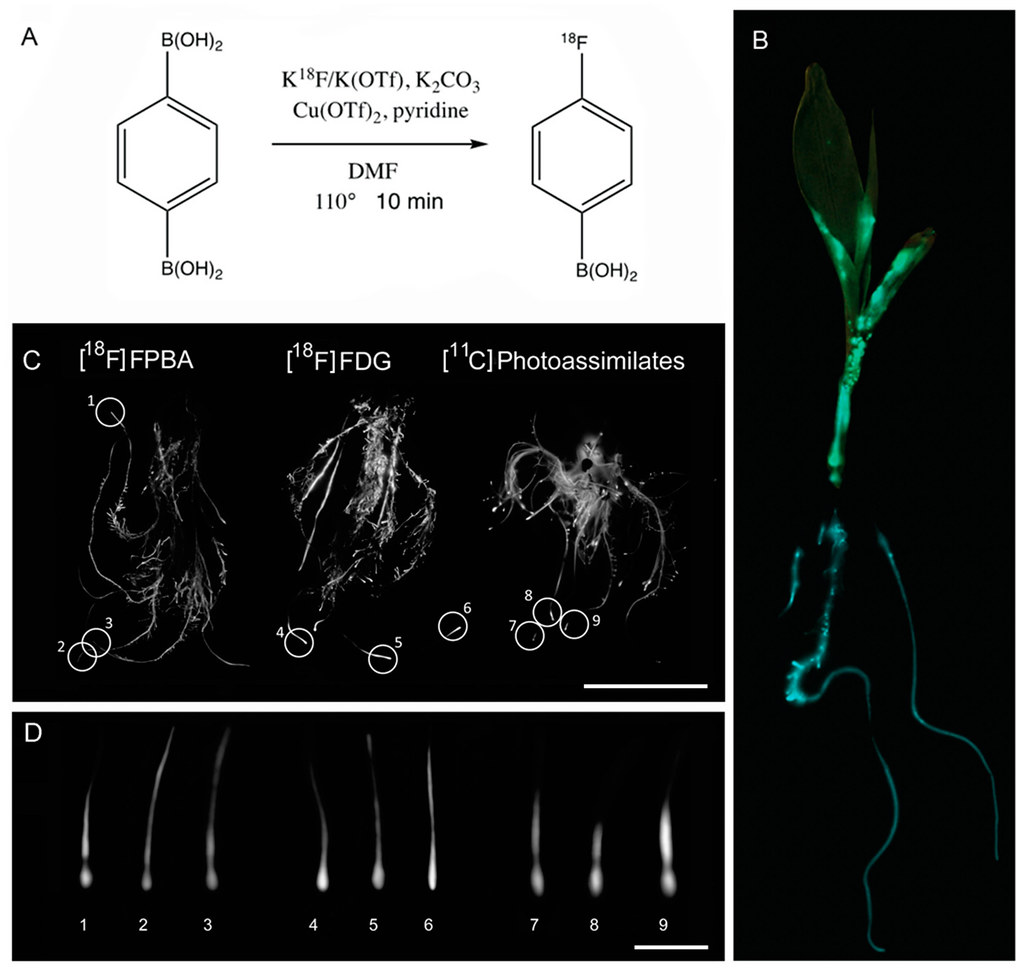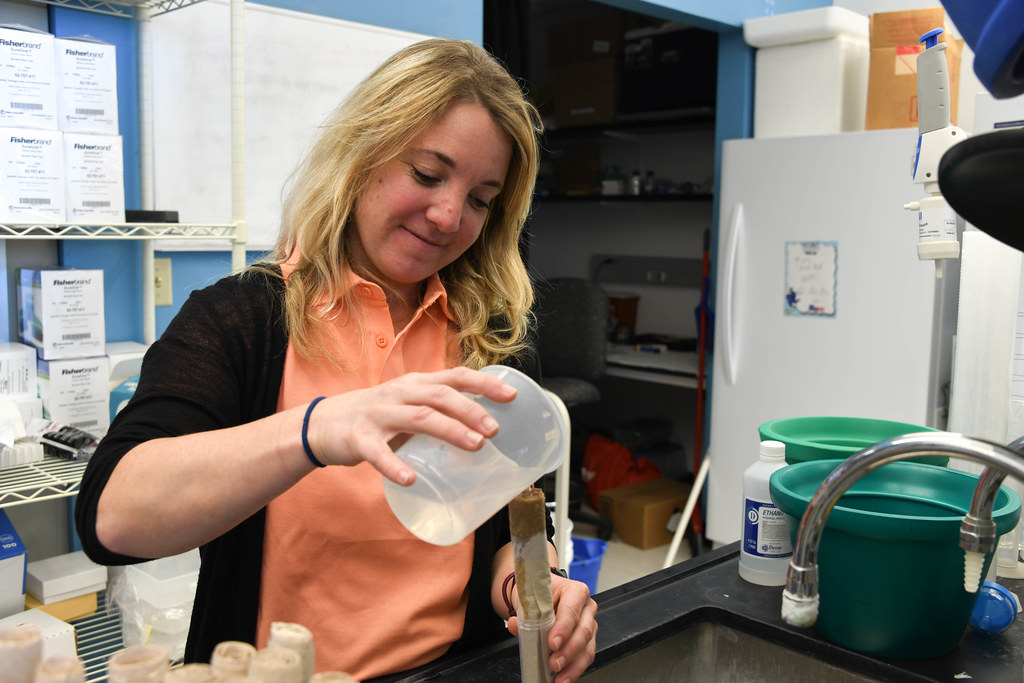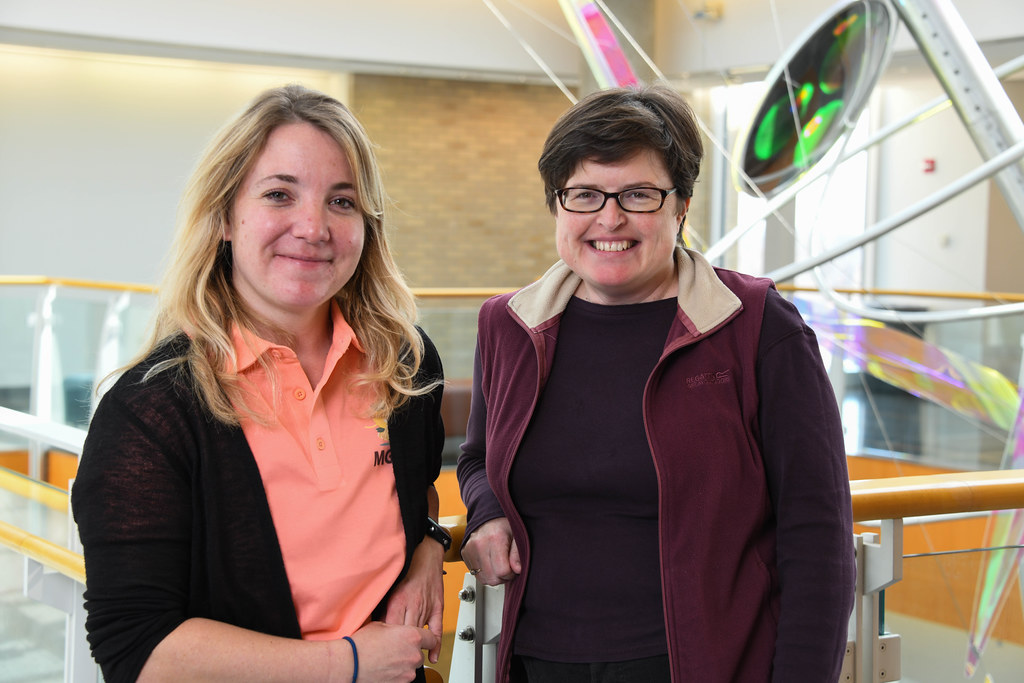News
Boron: Exposed

By Lauren Hines | Bond LSC
The element Boron, while extremely low in levels, leaves a trail of green and blue radioactive decay as it travels through the veins of plants.
Due to radiotracer technology, this picture of the element’s
movement provides this unique insight to what’s going on inside the leaves,
stems and roots of plants for the first time ever.
A new collaboration between Bond LSC’s McSteen lab and the
MU Research Reactor’s Ferrieri lab led the two labs to present [18 F]-4-FluoropPhenylboronic
Acid (FPBA), a radiotracer they designed that can track and visually report on
the movement of boron in plants, in a February journal article in the
International Journal of Molecular Sciences. The visual tracking was done
inside corn.
“It’s
the first time anyone has been able to see boron in plants, which is very
exciting,” said Paula
McSteen, associate professor and researcher at Bond LSC.
The Fifth Element
Boron is an essential micronutrient for plants, but
unfortunately, is deficient in soils worldwide. That leads to defects in the
roots and shoots of plants, therefore leading to a reduction in crop yields.
“Up to
now, there was no way of imaging boron in the plant, which makes it hard
because if you could see it somewhere else, like in the cell wall, you would
know it has a role there, right?” said Michaela Matthes, postdoctoral scholar
in the McSteen lab. “But no one can see it.”
Now, with the equivalent of a PET Scan (Positron Emission Topography)
some might receive in a hospital, researchers are able to image and track the
movement of boron in live plants to learn where in the plant it’s important and,
eventually, how to manipulate it to result in higher crop yields.
You might not think boron would be a controversial topic in
the life sciences community, but a longstanding dispute about its importance
has been debated for years. The argument is not whether or not the
micronutrient is critical to plant development and growth, but where and how it
functions. Since there’s such low levels of boron, it’s undetectable. Imaging
boron and being able to pick it out will allow a pathway to more direct
evidence of its role.
The research study found that the tracer accumulated in the
root tip, root elongation zone, lateral root initiation sites and leaf edges in
maize.
“So,
the accumulation of the tracer basically means there was a signal of the tracer
at the root tip, and at the leaf edges, which means boron is there,” Matthes
said.
This presence is exactly the kind of direct, visual evidence
that supports the argument of the role boron plays in maize growth.
“The
other methodologies we looked at would have measured the natural level of boron
in the plant, and because that is too low, it is below detection,” Matthes
said. “That is why the radiotracer is superior because we are actually adding
something to the plant that we then image.”

Tracking Boron
“When
we came here, we were keenly aware of Dr. McSteen’s interest in boron and the
challenges of imaging boron, so we started a discussion between our groups
about what we could bring to the table with our radiotracer technology,” said
Richard Ferrieri, research professor at the MU Research Reactor who came to MU
from Brookhaven National Laboratory.
A radiotracer is
a chemical compound where a radioactive element is added to whatever a
researcher wants to track, which acts as a tag as it moves through the body or
plant. Scientists take pictures of its radioactive decay, showing where the
element travels and ends up in higher levels.
In this case
radioactive fluorine was added to phenylboronic acid (PBA), a compound the
plant can easily absorb, which turns PBA into FPBA. FPBA
moves exactly like boron in the plant, so it provides an accurate
representation of where boron goes and possibly its role.
The
Ferrieri lab grew maize hydroponically, in a solution of plant nutrients, under
normal lighting conditions. Once they grew to a certain size, they were moved
into glass beakers where the roots were submerged in water. A formulation of
the FPBA tracer was then added so that the roots could natural absorb the
radioactivity.
Using
another imaging technique similar to getting an X-ray called, autoradiography, the
Ferrieri lab was able to obtain snapshots of the radioactivity inside the plant
to see where it accumulated.
“The
imaging that we do is giving us information on where the radioactive tracer
mimicking boron goes. Having that visual feedback gives us insight about boron’s
role in plant growth and development,” Ferrieri said. “I would say in the world
of plant biology, this is the first example of chemists sitting down and
designing a custom molecular probe to answer some hard, biological questions in
regard to boron uptake in plants,” Ferrieri said.

What There’s Left to Discover
“Very
little is known so far about boron,” Matthes said. “The very basic research
question has not been fully answered, and I think it’s fascinating to
contribute to that knowledge.”
Researchers
were limited in how they could investigate boron’s role without being able to
see where boron was in the plant. Matthes said the biggest gap in knowledge in
the field of studying boron is whether or not there is an additional role of
boron in the plant cell beyond the cell wall.
While
there is so little known about boron, researchers aren’t helping themselves due
to the lack of method standardization, according to a review written by
Matthes, McSteen and Janlo Robil, a Ph.D. candidate in the McSteen lab. When
procedures or measurements aren’t consistent across different studies, it makes
it hard for other researchers to duplicate experiments and build on existing
knowledge.
They
also went into evaluating different methodologies investigating boron and how
each of them is limited.
“What I think is the best [methodology] is probably a combination
of different approaches depending on the question you are asking,” Matthes
said.
However, the radiotracer approach can directly locate boron
without destroying the plant.
Even though much has been accomplished already, Matthes will keep working towards filling in those gaps.
Photos were used from Assessment of a 18F-Phenylboronic Acid Radiotracer for Imaging Boron in Maize.
Housh, A.B.; Matthes, M.S.; Gerheart, A.; Wilder, S.L.; Kil, K.-E.; Schueller, M.; Guthrie, J.M.; McSteen, P.; Ferrieri, R. Assessment of a 18F-Phenylboronic Acid Radiotracer for Imaging Boron in Maize. Int. J. Mol. Sci. 2020, 21, 976.